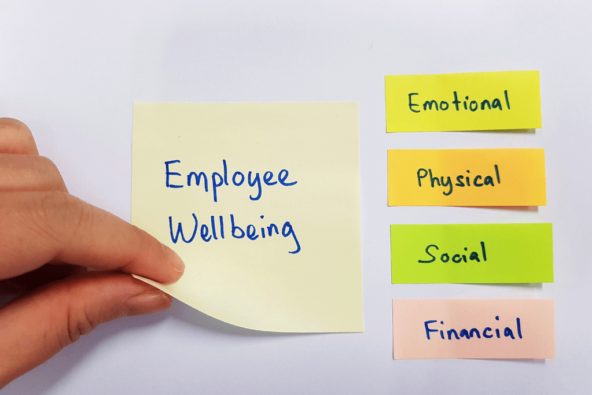For small and medium-sized enterprises (SMEs), supporting employee wellbeing might seem like a big task – especially when resources are tight. But it doesn’t need to cost the earth or involve a total culture overhaul. At Metro HR, we’re passionate about supporting our clients to create a healthier, happier workforce, so that their business can thrive.
In this blog, we’ll explore some smart, practical (and budget-friendly) ways to help your people feel supported, energised, and ready to do their best work. Whether your organisation is just beginning its wellbeing journey or wanting to strengthen what’s already in place, this blog is full of tips and ideas to help you.


Let’s start with the obvious:
Employees who feel well – physically, mentally, and emotionally – are more engaged, more productive, and more likely to stick around for the long-term.
What used to be considered an “extra” is now integral to creating healthy, high-performing teams.
Prioritising wellbeing has been shown to reduce absenteeism, improve morale, and create a culture that people are proud to be part of.
It’s not just about being kind (though that helps) – it’s also smart business.
Wellbeing doesn’t need to cost the earth – you don’t need a meditation pod or an in-house nutritionist to make an impact.


The rise in hybrid teams (remote working combined with in-person) has brought plenty of benefits – but it’s also blurred the lines between “work time” and “everything else.” Burnout can sneak in quietly, especially when people feel like they need to be “on” all the time.
Organisations can stay ahead of the curve by being vigilant and looking out for burnout symptoms, so that they can be addressed early on.


Flexible work arrangements are now a baseline expectation for many employees. But it only works well for both parties where there are clear agreements in place.
To really move the needle, wellbeing needs to be more than a one-off initiative – it should be built into the way a business operates.


A recent wellbeing initiative that hit the press recently was the ‘Movement Hour’, introduced by fitness coach Joe Wicks.
Employers are encouraged to give their staff an hour to move their bodies – whether that’s a gym session or a walk in the park, leading to better mental health and improved work-life balance. Over 600 companies signed up for the initiative, highlighting the positive impact of integrating wellbeing into the working day. And – proof that simple changes can have a big ripple effect.
In 2025, the businesses that thrive will be the ones that put people first – not as an afterthought, but as a core strategy.
SMEs may not have massive HR departments or endless budgets – but with the right approach, they can lead the way in creating workplaces where people feel supported, valued, and empowered to flourish.
Whether you’re looking to create a wellbeing strategy from scratch or you want to sense-check your flexible working policies to make sure they’re really working for your people, Metro HR are here to help.
If you’d like to find out more about how we can support you, why not book in for a free consultation call? We’ll talk through your current approach, your goals, and some practical next steps to get you moving in the right direction.
Let’s build a workplace where everyone has the chance to thrive.
Click the button below to book your call:
